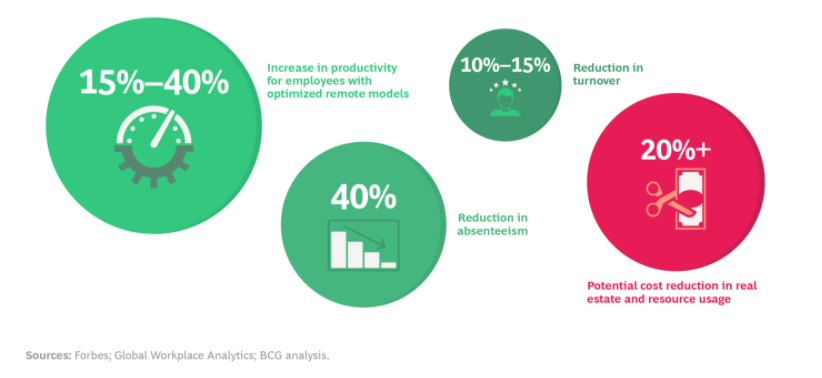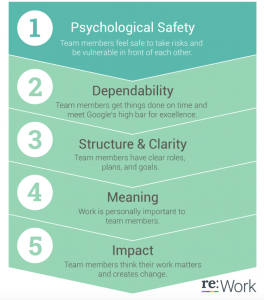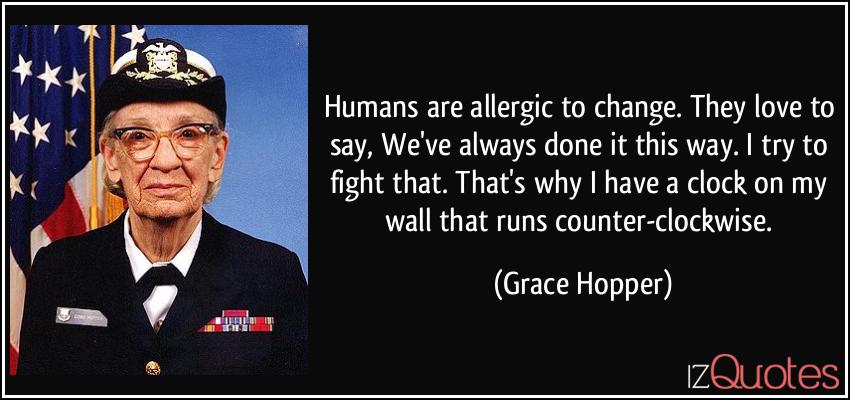“Culture Eats Strategy for Breakfast”
A statement famously (but erroneously) attributed to Peter Drucker, which essentially means that however much you work on your strategy, you ultimately cannot ignore the “people factor”. It is people that execute your strategy and it is through people that it will succeed or fail.
People Create Culture
The most important aspect for any organisation is people and how they interact. Not strategy, not processes, not operations, and not even finance. An organisation is built of relationships between people (plus some processes, and software) and people create culture. If strategy consists of the rules of the game, culture will determine how the game is played. Culture is how people behave and communicate.
Psychological safety is often an emergent property of great organisational culture, but that doesn’t mean you can’t explicitly and purposefully work towards it and state that one of your goals for the organisation is to possess a great degree of psychological safety. Indeed, the first step in an intelligent journey to build psychological safety is often stating your goal and asking for help in getting there.
Psychological Safety and Culture
I’ve previously written about how to measure psychological safety, but measuring culture can be more challenging. Following his work in 1991 on technologies and disasters, Dr. Ron Westrum wrote in 2003 about The Typologies of Organisational Cultures that reflect how information flows through an organisation. He wrote: “organisational culture bears a predictive relationship with safety and that particular kinds of organisational culture improve safety…” That is to say, because information flow is influential and indicative of other aspects of culture, it can be used to predict how organisations or parts of them will behave when problems arise.
Westrum was focussed on real-world safety measures in the realm of healthcare and aviation, but in our technology world we should strive to adopt the same diligent approach to safety for the sake not just of the products we build but for the humans on our teams as well.
Culture is the almost intangible aspect of an organisation that so often reflects the CEO’s personality or the stance of the board members. As Westrum states:
“Culture is shaped by the preoccupations of management.”
For example, if management, particularly senior management, are most concerned about exposure to risk, the organisational culture will reflect that, with processes and checks in place to ensure risk is reduced wherever possible; this usually results in a decreased focus on innovation, lower speed to market, and a low appetite for change.
In 2015, Jez Humble, Joanne Molesky, and Barry O’Reilly wrote the book “Lean Enterprise: How High Performance Organizations Innovate at Scale”, which highlighted how critical culture is to performance, and highlighted Westrum’s Typology model. “Instead of creating controls to compensate for pathological cultures, the solution is to create a culture in which people take responsibility for the consequences of their actions.”
The 2016 state of DevOps Report also showed that Generative, performance-oriented cultures improve software delivery performance, alongside market share, productivity and profitability.
Westrum’s Typologies subsequently appeared in Nicole Forsgren’s book “Accelerate” in 2018, where she was able to show that generative cultures were associated with improved software delivery performance (the four Accelerate Metrics) and other organisational capabilities for learning.
Westrum’s Organisational Typologies
See the table below for Westrum’s organisational typology model of Pathological, Bureaucratic, or Generative (Westrum had previously used “calculative” but later decided that bureaucratic was better interpreted by people in organisations). Each column describes a broad cultural typology and six aspects of those cultures. It is clear from the table that the Generative culture that Westrum describes is a broadly psychologically safe culture where team members cooperate, share their fears, admit failure and continually improve.
| Pathological |
Bureaucratic |
Generative |
| Power oriented |
Rule oriented |
Performance oriented |
| Low cooperation |
Modest cooperation |
High cooperation |
| Messengers “shot” |
Messengers neglected |
Messengers trained |
| Responsibilities shirked |
Narrow responsibilities |
Risks are shared |
| Bridging discouraged |
Bridging tolerated |
Bridging encouraged |
| Failure leads to scapegoating |
Failure leads to justice |
Failure leads to inquiry |
| Novelty crushed |
Novelty leads to problems |
Novelty implemented |
The Westrum organisational typology model: How organizations process information ( Ron Westrum, “A typology of organisation culture),” BMJ Quality & Safety 13, no. 2 (2004), doi:10.1136/qshc.2003.009522.)
By surveying people across the organisation, you can establish the broad typology in which your organisational culture sits, and identify measures to improve. Ask respondents to rate their agreement on a 1-5 scale (1 being not at all, 5 being complete agreement) with the below statements:
- On my team, information is actively sought.
- On my team, failures are learning opportunities, and messengers of them are not punished.
- On my team, responsibilities are shared.
- On my team, cross-functional collaboration is encouraged and rewarded.
- On my team, failure causes enquiry.
- On my team, new ideas are welcomed.
These 6 statements are from Dr Nicole Forsgren’s research into high performing teams at DORA.
Each of these statements align with a row in the table above, so by collecting and analysing the average scores, you can quantitatively determine where your organisation resides in Westrum’s Typologies. Analyse the standard deviation of the scores to determine both the range of scores and the degree of statistical significance of the results.
Average these scores for your summative Westrum’s Typology score. Close to zero suggests your culture is towards “Pathological”, 2-3 suggests Bureaucratic, and 4-5 suggests a Generative culture:
The individual statement scores suggest areas for improvement. For example, if your score for statement 4 is particularly low, investigate and employ practices to improve collaboration between different functional teams, ask teams what challenges they face in communication and collaboration, and facilitate informal gatherings or events where people in different teams can get to know each other.
Intra-Organisational Psychological Safety
Ron Westrum describes a culture of “safety” in Generative organisations, and it’s easy to see how psychological safety is both increased in, and fundamental to, Generative cultures. Amy Edmondson, in 2008, described “Learning Organisations” in her paper “Is yours a learning organization?” and similarly suggested an assessment framework to measure how well a company learns and how adeptly it refines its strategies and processes.
There are many ways to improve the psychological safety of your team and your organisation, but sometimes as a leader, your influence may not extend very far outside of your team, and as a result, you may decide to build a high-performing, psychologically safe team within an environment of much lower psychological safety. This is admirable, and most likely the best course of action, but it is one of the most difficult places to put yourself as a leader.
Consider the “safety gradient” between your team boundary and the wider organisation. In a pathological or bureaucratic organisation, with varying degrees of toxic culture, that safety gradient is steep, and can be very hard to maintain as the strong leader of a high performing team. You may elect as your strategy to lead by example from within the organisation, and hope that your high-performing, psychologically safe team highlights good practice, and combined with a degree of evangelicalism and support, you can change the culture from “bottom-up”, not “top-down”.
This can work, and it will certainly be rewarding if you succeed, but a more effective strategy may be to build your effective team whilst lobbying, persuading and influencing senior management with hard data and a business case for psychological safety that demonstrates the competitive advantage that it can bring.
Create Psychological Safety
Take a look at my Psychological Safety Action pack, with a ready-made business case and background information, workshops and templates, to give yourself a shortcut to influencing and build a high performance, psychologically safe, and Generative organisational culture.
For any further information on how to build high performing organisations and teams, get in touch at tom@tomgeraghty.co.uk.





